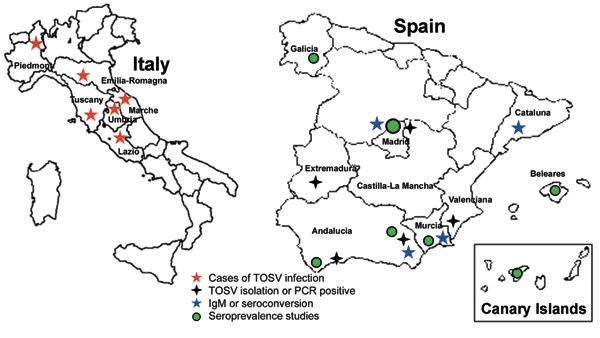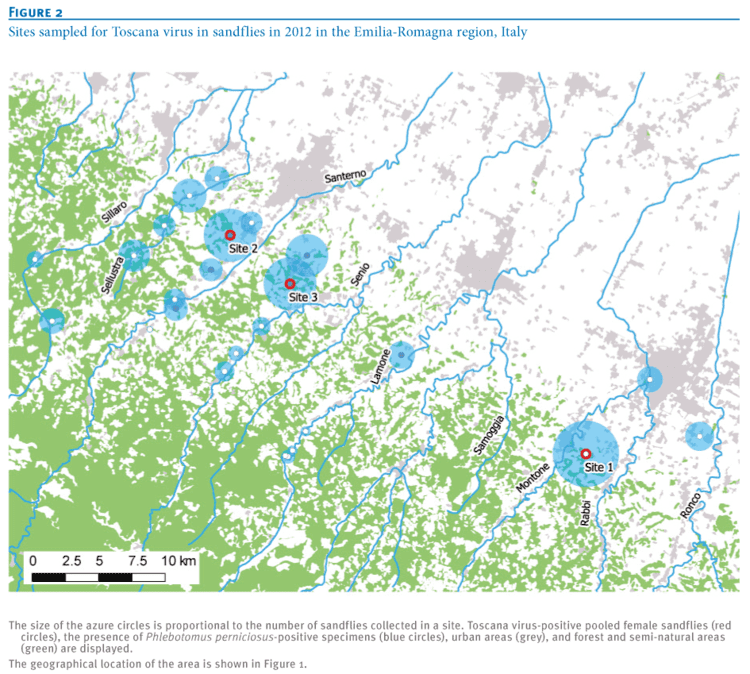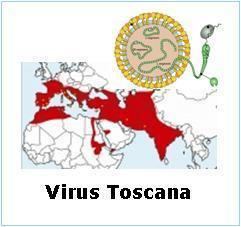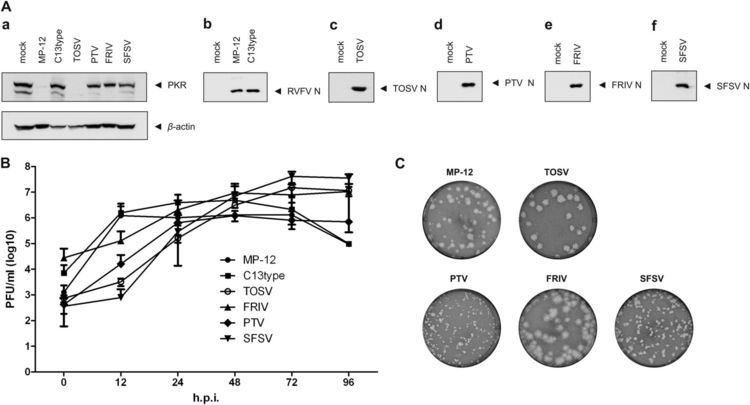Group Group V ((−)ssRNA) Family Bunyaviridae Species Toscana virus | Order Unassigned | |
 | ||
Similar Phlebovirus, Bunyaviridae, Phlebotomus, Nairovirus, Seoul virus | ||
Toscana virus
Toscana virus (TOSV) is an arbovirus (arthropod-borne virus) belonging to Bunyaviridae, a family of negative-stranded, enveloped RNA viruses. The virus can be transmitted to humans by the bite of an infected sandfly of the genus Phlebotomus. Toscana is not normally associated with disease, as indicated by high seroprevalance rates (up to 25%) in endemic areas, but in common with other sandfly transmitted viruses such as Naples virus and Sicilian virus, infection may result in Pappataci fever, an illness with mild fever, headache and myalgia. In serious cases that go undiagnosed, acute meningitis, meningoencephalitis and encephalitis may occur. There is no specific treatment for infection, so treatment is supportive, reducing the severity of symptoms until the immune system has cleared the infection.
Contents

The virus is found in most countries that border the Mediterranean Sea, with the highest incidence in Italy. Infection rates peak during the summer time as sandfly populations grow more abundant.

Structure and genome

TOSV has a spherical, enveloped body with an 80–120 nm diameter. The genome is encased in a nucleocapsid and consists of negative-sense RNA broken into three segments, termed L, M and S. L is about 6,400 nucleotides in length, M about 4,200 nucleotides in length, and S about 1,900 nucleotides in length. L encodes for the viral polymerase, M encodes for structural glycoproteins and S encodes for nucleic proteins.
Diagnosis
Laboratory diagnosis of TOSV infection can be performed through the use of ELISA, immunofluorescence and/or neutralization tests, but reverse transcription, real-time polymerase chain reaction assays are preferred because they are less time-consuming and reduce the risk of contamination.
Epidemiology

This virus is a leading cause of acute meningitis between May and October in Central Italy and in other northern Mediterranean countries (Croatia, France, Greece, Portugal and Spain) as well as several of the eastern Mediterranean countries (Cyprus and Turkey). It is among the 3 most prevalent viruses associated with meningitis during the warm seasons: the other two are enteroviruses and herpesviruses.
History

Toscana virus (TOSV) was first isolated in 1971 from Phlebotomus perniciosus and Phlebotomus perfiliewi in Monte Argentario (Grosseto, Tuscany).

